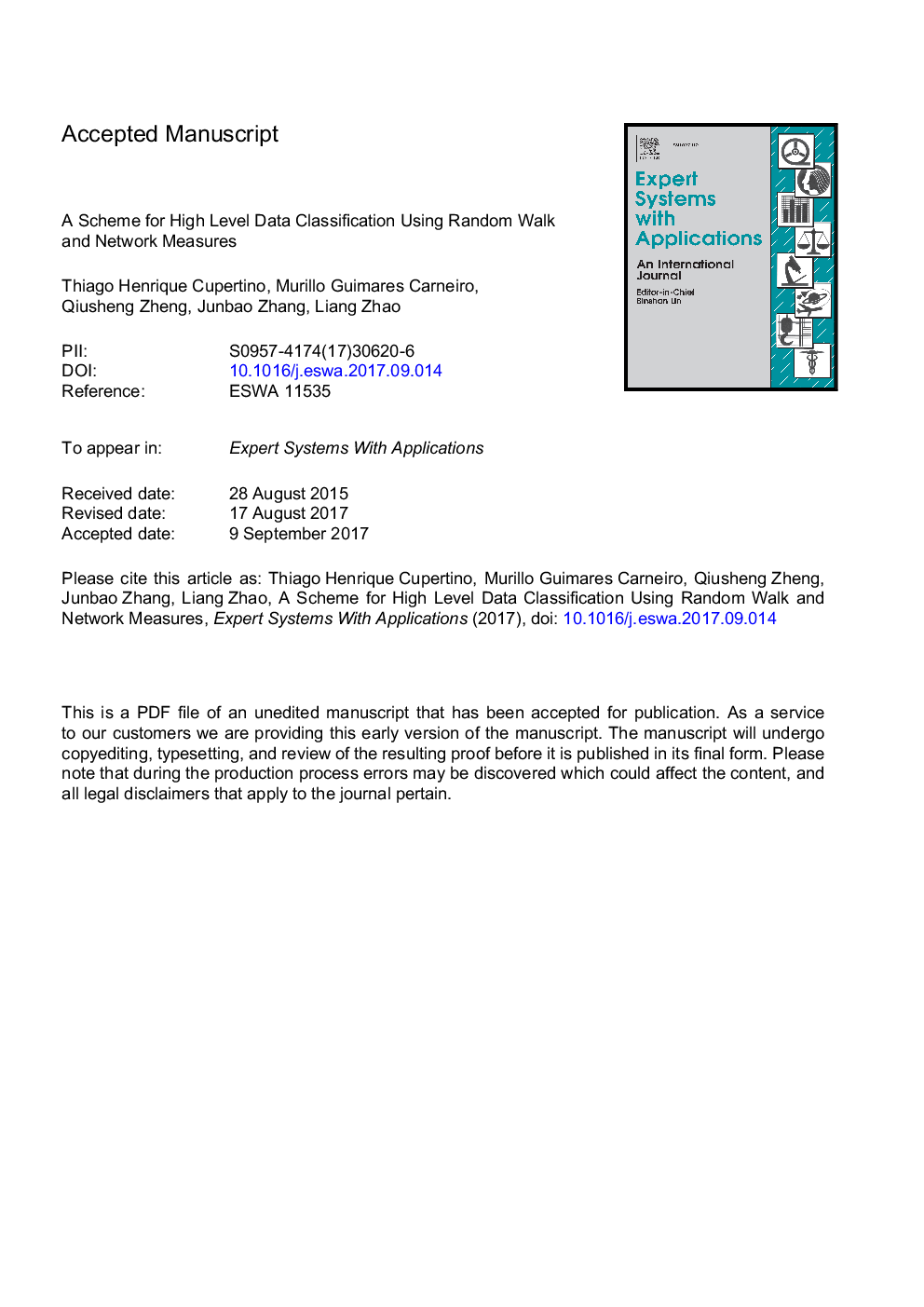| Article ID | Journal | Published Year | Pages | File Type |
|---|---|---|---|---|
| 4943015 | Expert Systems with Applications | 2018 | 37 Pages |
Abstract
Supervised classification techniques are known to exploit physical information of the analysed data, such as similarity, distribution and other low level features. Despite the relevance of such features, recent works have showed that a higher variety of patterns can be detected by combining low level and high level features. In this paper, it is proposed a supervised classification technique which applies limiting probabilities of the random walk theory over underlying networks constructed from input labeled data. The appealing feature of the proposed approach is that the adjacency matrix which carries both physical and structural information about the data. Structural information are given by features extracted from network connections. The class of a given unlabeled sample is estimated by a heuristic called ease of access, which is measured by the random walk process over the adjacency matrix. Such approach makes the technique quite general as one can put distinct data measures of interest in the connection matrix of the underlying data network to guide the random walker. Specifically, we show examples of combining low and high level features in the proposed classification scheme. Simulation results using artificial and real data sets suggest that the proposed technique is not only competitive with current and established classification techniques, but it also can reveal intrinsic structural patterns formed by the input data.
Related Topics
Physical Sciences and Engineering
Computer Science
Artificial Intelligence
Authors
Thiago Henrique Cupertino, Murillo Guimarães Carneiro, Qiusheng Zheng, Junbao Zhang, Liang Zhao,
